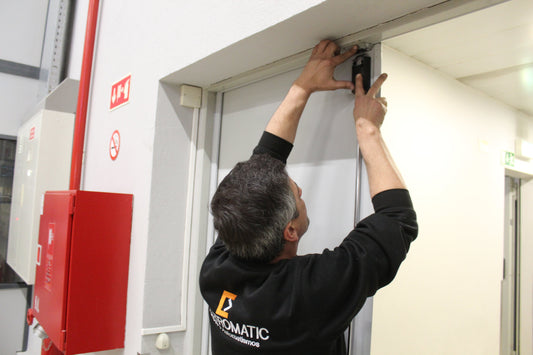Is your equipment at risk? 5 signs that indicate the need for maintenance
Share

Is your equipment at risk? 5 signs that indicate the need for maintenance.
Avoid unexpected failures! Keep your equipment in perfect condition and extend its lifespan.
Keeping your equipment in good working order is essential to ensure safety,
efficiency and avoid unnecessary repair costs. Lack of maintenance
can result in unexpected failures, compromising productivity and even
putting your safety at risk. If you notice any of the signs below, it may be
the right time for preventive maintenance:
1. Unusual noises: If your equipment starts making strange sounds, such as popping, buzzing, or grinding, this could be a sign of worn internal parts or a lack of lubrication. Ignoring this symptom can lead to more serious failures.
2. Reduced performance: If the equipment doesn't work as efficiently as before, is slow, or fails frequently, it may be due to accumulated debris or worn internal components. Poor performance can increase task completion time and impair operation.
3. Excessive heating: Equipment that heats up excessively may be experiencing problems with the ventilation system, lack of lubrication, or electrical failures. This heat can burn components and even cause short circuits.
Avoid unexpected failures! Keep your equipment in perfect condition and extend its lifespan.
Keeping your equipment in good working order is essential to ensure safety,
efficiency and avoid unnecessary repair costs. Lack of maintenance
can result in unexpected failures, compromising productivity and even
putting your safety at risk. If you notice any of the signs below, it may be
the right time for preventive maintenance:
1. Unusual noises: If your equipment starts making strange sounds, such as popping, buzzing, or grinding, this could be a sign of worn internal parts or a lack of lubrication. Ignoring this symptom can lead to more serious failures.
2. Reduced performance: If the equipment doesn't work as efficiently as before, is slow, or fails frequently, it may be due to accumulated debris or worn internal components. Poor performance can increase task completion time and impair operation.
3. Excessive heating: Equipment that heats up excessively may be experiencing problems with the ventilation system, lack of lubrication, or electrical failures. This heat can burn components and even cause short circuits.
4. Abnormal vibrations: If the equipment exhibits irregular movements or excessive vibrations during operation, this may indicate misalignment of parts, wear, or looseness in internal components. This instability can compromise its structure and lead to irreversible damage.
5. Increased energy consumption: If you've noticed a significant increase in energy consumption for no apparent reason, it could be an indication that the equipment is operating at a lower efficiency. Worn motors, overloaded components, or electrical faults can all cause increased energy consumption.
🔧 The importance of preventive maintenance: Performing regular maintenance avoids high repair costs and extends the equipment's lifespan. Furthermore, well-maintained equipment operates more efficiently, reducing energy consumption and avoiding unexpected events.
Don't wait for a bigger problem! Schedule preventive maintenance now and ensure your equipment runs optimally.
5. Increased energy consumption: If you've noticed a significant increase in energy consumption for no apparent reason, it could be an indication that the equipment is operating at a lower efficiency. Worn motors, overloaded components, or electrical faults can all cause increased energy consumption.
🔧 The importance of preventive maintenance: Performing regular maintenance avoids high repair costs and extends the equipment's lifespan. Furthermore, well-maintained equipment operates more efficiently, reducing energy consumption and avoiding unexpected events.
Don't wait for a bigger problem! Schedule preventive maintenance now and ensure your equipment runs optimally.





